We know firsthand that this HDMI cable is for high-definition multimedia, allowing you to transmit high-definition digital video data and multi-channel digital audio signals.
We know that HDMI cables vary greatly in price. Let's try to figure out what we need and how much to buy.
We are interested in two HDMI cable standards...1.3 old and 1.4 new standard.
The main difference between HDMI 1.4 and HDMI 1.3 is support for 3D images. So if there is a prospect of buying a 3D projector, TV, receiver, then HDMI 1.4 is necessary.
I’ll say right away that on 1.3 HDMI you will see an HD picture, but the developers say that the 1.4 HDMI standard is more reliable.
And so about the HDMI cable itself.
The HDMI cable looks quite intimidating in cross-section, but do not forget that, in addition to the video signal, audio also passes through it, plus it has now become fashionable to pass it through HDMI Ethernet (up to 100 Mbit/s in version 1.4).
Most users of modern multimedia equipment this standard(1.4) is associated with 3D support only.
And this is understandable:
The current generation of the HDMI standard requires that all cables meeting version 1.4 specifications be capable of delivering 10.2 gigabits per second of bandwidth.
The reality of the current market is that when choosing cables (purchase), you simply cannot find ones that do not support HDMI 1.4.
In other words, if a cable is compatible with the HDMI 1.4 standard, then it is understood that it passes through itself all the signal necessary for full and high quality playback video and audio content.
Important…
For the vast majority of consumer electronics configurations capable of playing high-definition video, it makes absolutely no difference whether the components are connected using a $3 noname HDMI cable bought on eBay or a $120 one purchased at a high-end electronics store. .
Because all the most stringent tests did not reveal absolutely no difference in the image quality produced by the cheapest and most expensive cables...
The most important feature of a twisted pair HDMI cable is that it is simply not designed to transmit a wideband signal over significant distances ( according to specifications - no more than 10 meters without repeaters-amplifiers).
Don't be confused... every packet that does not reach the recipient, in computer network may be resent. And the video signal in an HDMI cable (as in DVI) ... is a unidirectional stream that flows continuously, without any pauses to check and correct transmission errors.
The stream simply flows to the recipient, and flows very quickly, regardless of what comes out at the end.
Speaking of DVI... An adapter is required to connect a DVI device to HDMI. DVI, by the way, can also transmit HD video of maximum quality (1080p60 – 1920×1080 pixels at 60 full frames per second), channel speed is 5 Gbit/s.
We came across (DVI) in, and nothing, the picture is excellent.
In addition, in an HDMI cable, the signals do not travel in series, but in parallel. Three color signals travel along three pairs of wires, and the fourth pair carries a clock signal.
For high-quality image transmission, these signals must in no case fall out of synchronization with each other and with the clock frequency.
For short transmission lengths this is achieved relatively easily, but with increasing cable length and very high frequency signal to ensure such synchronization becomes extremely difficult.
In other words, inevitable interference and failures appear here too. However, an important circumstance that needs to be noted is that interference in digital and analog cables... are significantly different things in terms of the external result.
A damaged digital signal can be easily identified at first glance even by the most inexperienced viewer... by the appearance of characteristic artifacts (stripes, squares) on the screen or simply by the scattering of the picture.
We can say that here we are not talking at all about whether the picture is better or worse, but whether the cable works as it should or not.
It should also be noted that there are only four types of HDMI cables, if you do not take into account special versions and different types connectors.
- Standard cable (category 1)
- High speed (category 2)
- Standard cable (category 1) with Ethernet link
- High-speed (category 2) with Ethernet link
Standard cables are designed to transmit a high-definition 1080i TV signal, although, as a rule, they also support 1080p, but they do not guarantee this.
Standard— Supports video resolutions of 1080i or 720p and is designed to connect any home devices with undemanding parameters ( DVD player a, satellite TV receivers, plasma and liquid crystal panels...).
A budget option for conventional signal sources and receivers. Suitable for those who do not require high quality image and sound.
Maximum throughput: 4.9 Gbps
Maximum bandwidth: 165 Mpixels (video streaming)
Maximum color depth: 24 bits
High Speed— Supports almost all video formats, including Deep Color and 3D (here read about how 3D technology works on TVs).
Supports Audio Return Channel technology, which makes it possible to transmit audio data without using any S/PDIF audio connection (no additional cable).
Of course, connected devices (TV, home theater) must support this technology. These devices are sometimes abbreviated as ARC to help them be easily identified.
Designed for connecting high-quality devices (Blu-ray and HDD players, plasma and LCD panels, satellite TV receivers). Capable of transmitting image signals with resolutions of 1080p and higher (4K x 2K - 4096x2160).
Maximum throughput: 10.2 Gbps
Maximum bandwidth: 1080 megapixels
Maximum color depth: 48 bit
Standard with Ethernet— Has all the listed advantages of a Standard HDMI cable and has an additional Ethernet HDMI data transmission channel.
Provides bidirectional data transfer at speeds up to 100 Mbit/s. This cable feature will be available only if the connected devices support Ethernet HDMI.
This connection allows the device to receive high speed internet connection and at the same time distribute the received content from the network to other devices connected via HDMI. It is worth noting that, unlike the Standard cable, it supports Audio Return Channel technology.
High Speed with Ethernet- Backwards compatible with all types discussed, has all the capabilities of a High Speed cable and has an Ethernet HDMI data link with speeds up to 100 Mbps.
This is a universal cable with maximum capabilities that the HDMI 1.4 specification represents.
There is also a very interesting cable:
Automotive standard (Stansart Automotive) is a special type of cable that makes it possible to connect external HDMI devices to a car media system. Mostly used by car audio installers.
We found out that the High Speed with Ethernet type in specification 1.4 is more technologically advanced in all respects, and now let’s talk a little about the existing HDMI cable connectors.
According to the specification, the types of HDMI connectors are designated by Latin letters (A, B, C, D, E) or the words mini and micro.

Type A (standard HDMI)- a standard connector that is most often found in digital technology.
Type C (micro HDMI) and Type D ( mini HDMI)
- reduced types are usually found on tablets, cameras, laptops, camcorders and various mobile and portable devices.
Type B- has an extended video channel for transmitting images with a resolution above 1080p (less popular than previous types).
Type E— the connector has a lock that ensures reliable fixation of the connector with the socket during operation of the device (used in cars to connect multimedia devices).
As you understand, the characteristics of the cable directly depend on the material from which it is made, but check it physical properties almost impossible.
It turns out that when buying an HDMI cable you have to rely on the conscience of the manufacturer, and then test it yourself and draw a conclusion about the quality of playback from your personal feelings.
And all this regardless of the cost, if the cable is high-speed, it is obliged to do this.
Otherwise, it is defective or manufactured in violation of production requirements.
I answer all questions in detail.Friends! Everything you do on the computer, watch movies, cartoons, chat on Skype, play, view photos, slides or Internet pages in a browser, all this will be shown on the screen of your TV if the TV is connected to the computer via an HDMI cable. Nowadays, almost any TV has an HDMI input, and most produced video cards have an HDMI output.
The HDMI interface was invented in order to connect two high-tech digital devices (which are undoubtedly your computer and TV) and transfer information from device to device without loss of quality. Such transmitted information may be an image and multi-channel high quality sound. If you have a movie or cartoon on your computer, in any HD, Blu-ray or AVI, MOV, MPG, MP4 format, then you can watch it all on your TV. There are slides or photos, please look. I’m not talking about games, because I’m not a supporter of them; they take up a lot of time from young people, which can be spent on studying. We connect the TV to the computer via HDMI with a second monitor To connect the computer to the TV we will use an HDMI cable, it looks like this and can be up to 20 meters long, choose the cable of the length you need.
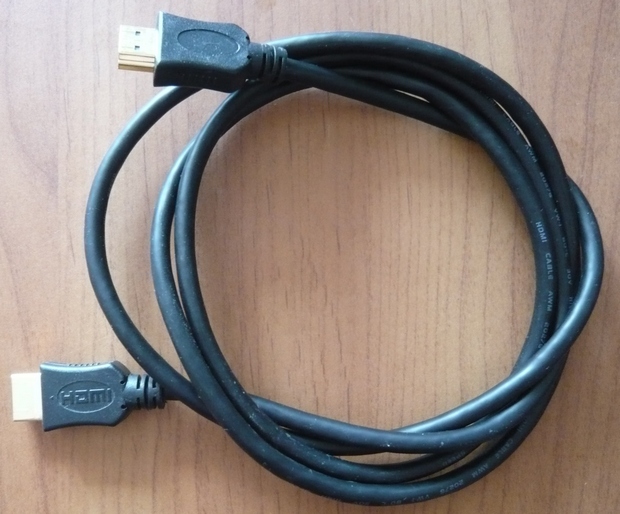
For example, let’s take a Samsung TV, a not entirely new 4 series (LED type), purchased several years ago, but it already has two connectors for connecting HDMI devices.
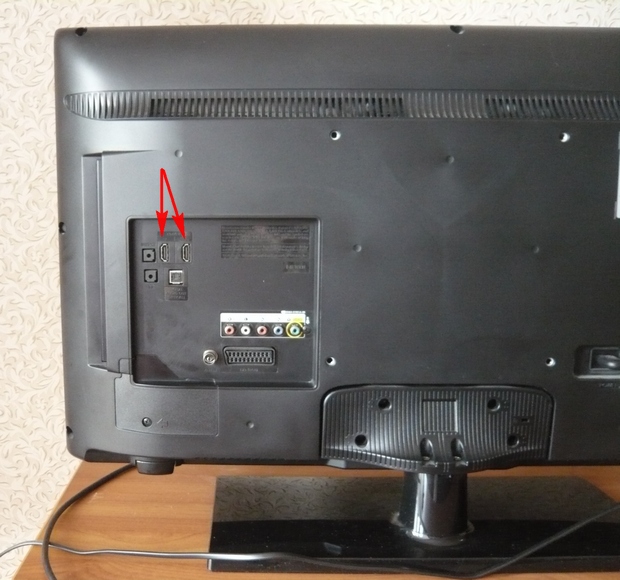
The computer that we will use to connect to the TV was also purchased about three years ago, it has an Nvidia video card installed and also has an HDMI connector.
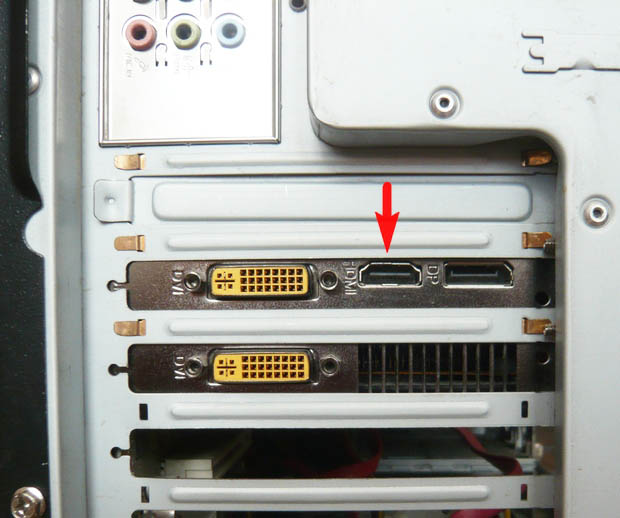
As I already said, our TV has two HDMI connectors. With the TV turned off, connect the HDMI cable to the HDMI 2 connector,

Connect the other end of the cable to the HDMI connector of the video card. desktop computer. The computer, in turn, is already connected to the monitor (also Samsung SyncMaster 971P) with a DVI cable.
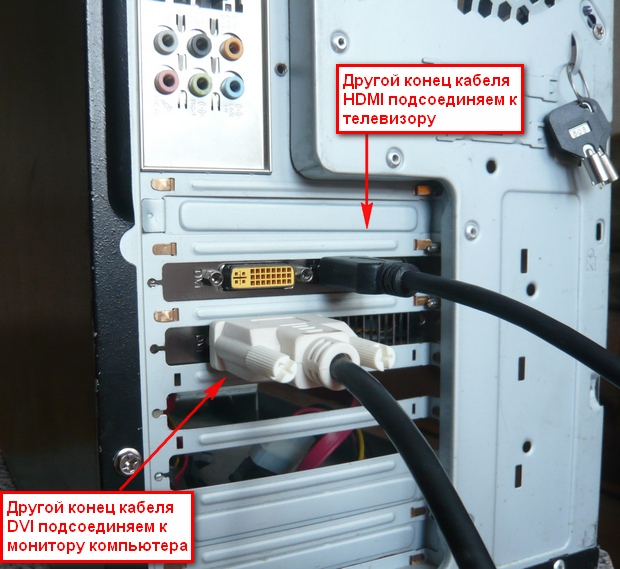
We turn on the computer and TV. There may not be an image on the TV right away, instead we see the following message: “Cable not connected” “Check cable connections and source parameter” or “Weak signal or no signal”

On Samsung TVs, to display a list of all available video sources, you need to press the Source button on the remote control.

A menu appears on the TV, in this menu, using the remote control, select the HDMI 2 connector,


Now, on our TV, an exact copy of our computer’s desktop should appear. But again there is nothing, the same error appears on a black screen. So we go to the “Screen Resolution” settings. Right-click on the desktop and select “Screen Resolution”.
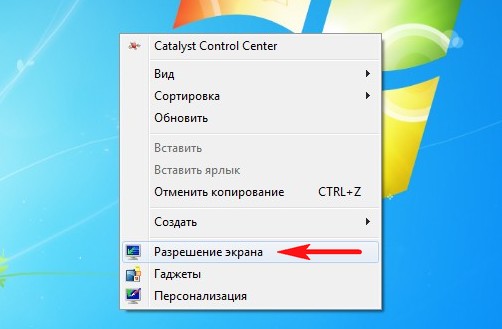
As we can see in the window that appears, our main screen is set to the second (2) Samsung SyncMaster 971P monitor, and in the “Multiple Screens” parameter we have set “Display desktop only on 2 monitor”, which is why the image is only present on the computer monitor screen, but it's not on the TV
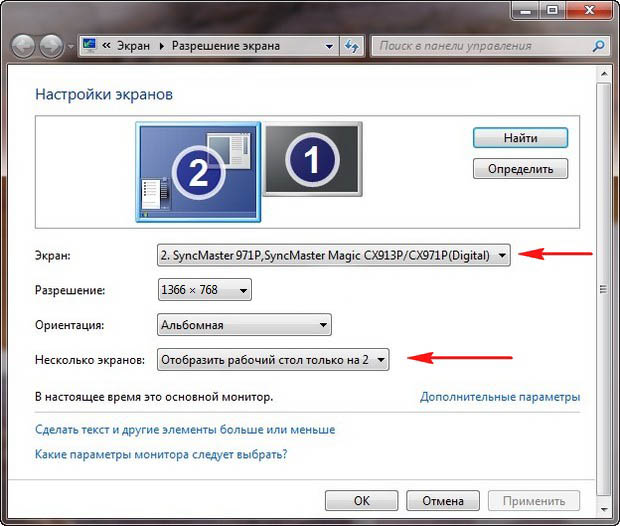
We bring everything in this window to this state. Select a parameter
Multiple screens: "Duplicate these screens"
In the “Screen” parameter, “Multiple monitors” is automatically set, click Apply and OK.
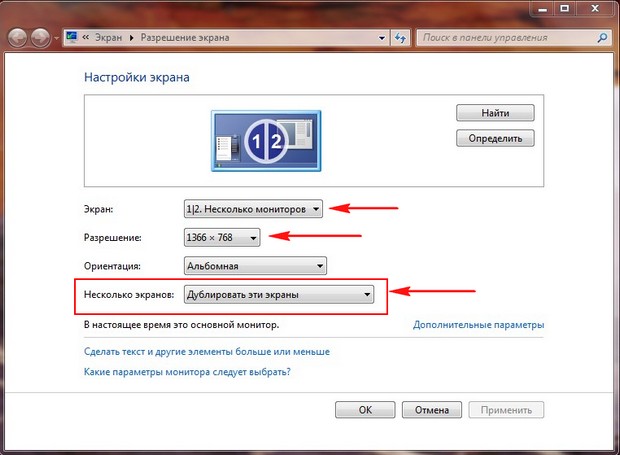
The desktop of our computer appears on the TV.
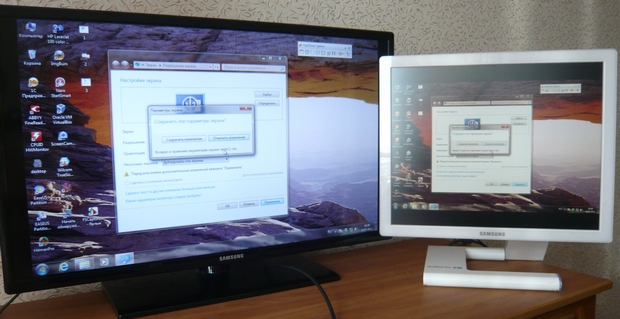
The resolution of our small Samsung TV is 1366 x 768. If your computer monitor supports this resolution, then it will automatically be set to the same resolution of 1366 x 768. If not, then either the TV or monitor will have the wrong resolution. For example, my Samsung SyncMaster 971P monitor has a maximum resolution of 1280x1024. When using a TV and a computer monitor at the same time, the main thing for me is to set the resolution on the TV correctly, otherwise why would I connect it then. I put it on Samsung TV The resolution is 1366 x 768, the image is perfect.

And on a computer monitor such a resolution of 1366 x 768 looks like this.

And nothing can be done here. If you want the perfect image on your TV and computer monitor, then they must support the same screen resolution, that is, have the same characteristics. There is no sound on the TV after connecting the TV to the computer via HDMI Friends! Don't forget that the HDMI interface transmits video and sound over one cable and we can specify in the settings operating system Use the TV's built-in speakers to output sound.
Let's fix the problem by using a TV instead of a monitor. Go to Start->Control Panel->
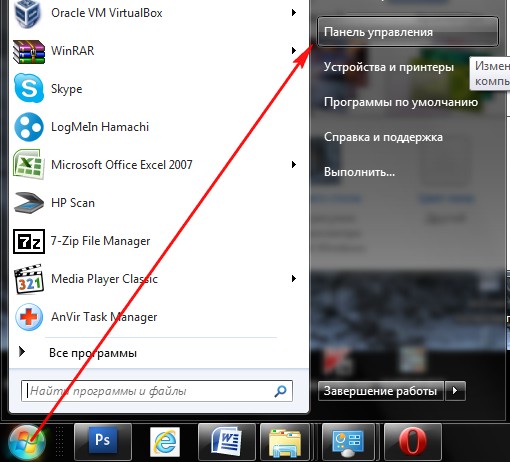
Hardware and Sound->Sound
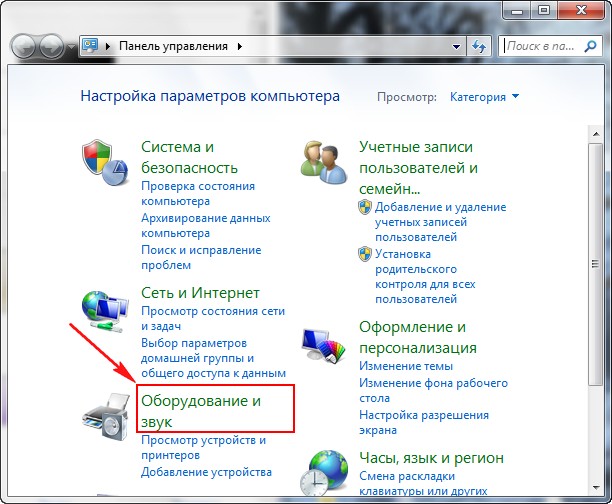
If you don’t have anything in this field, right-click on an empty space and in the menu that appears, check the “Show disabled devices” items. "Show connected devices"
Now we look at the name of our TV, in my case it is Samsung, we need to turn it on and turn off the rest. Right-click on Realtek and select Disable.
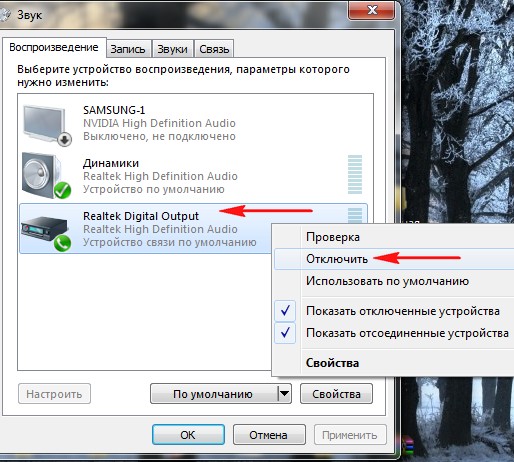
We also turn off the speakers.
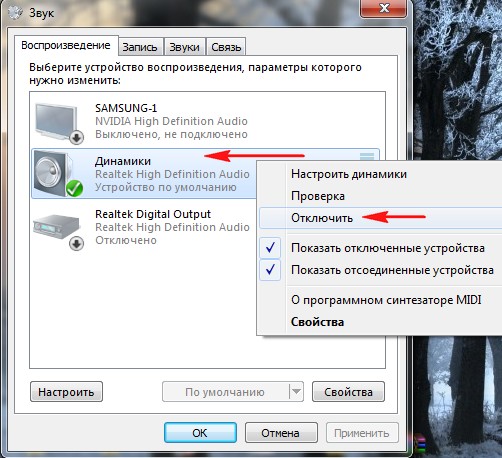
Samsung – Enable, Apply and OK.
Q: Do existing HDMI cables support HDMI 2.0 high bandwidth?
A: Yes, High Speed HDMI cables support the higher bandwidth of the new specification (up to 18 Gbps).
HDMI 2.0 defines the new effective method transmit signals at speeds higher than those allowed in version 1.4b (10.2 Gbps), providing higher bandwidth (up to 18 Gbps) over existing HDMI cables.
Q: Will HDMI 2.0 replace previous versions?
A: No, HDMI 2.0 implementation requires HDMI 1.x support as a baseline requirement.
Q: Is HDMI 2.0 backward compatible with HDMI 1.x?
A: Yes, all new HDMI versions are backward compatible with previous versions.
Q: Do HDMI 2.0 require new connectors?
A: No, HDMI 2.0 uses existing ones.
Q: Do HDMI 2.0 require new cables?
A: No, existing ones are suitable. To transmit 4K video (3840x2160) at 50/60 fps, you must use high-speed HDMI cables (Category 2).
Q: Can I upgrade my HDMI 1.x device to HDMI 2.0?
A: Currently there is no such update option. Due to the expanded feature set, such a conversion will require hardware and software- this is within the competence of the manufacturer.
HDMI 1.3, 1.4
Q: What is the difference between HDMI1.3, HDMI1.3aand 1.3b?
ABOUT: For the user, there is no difference between the HDMI versions, be it 1.3, 1.3a or 1.3b. Small differences in specifications are usually relevant to production or testing, but do not introduce new features. Plus, the HDMI licensing body is actively working with manufacturers to reduce consumer confusion and suggests not focusing on versions at all, but instead focusing on useful product features and functionality.
The latest HDMI specification code is v1.3a, and last test for HDMI compatibility - 1.3c.
Q: Does HDMI supporttransmission of encoded subtitles?
A: Subtitles
The transition from analogue to digital television made it possible to add new capabilities for transmitting encoded subtitles (Close Captioning).
Analog television had one standard for broadcasting and transmission, decoding and displaying content - NTSC or PAL, depending on the region, which made connecting subtitles on television devices quite simple - after all, any TV provided the ability to decode them.
With the advent digital television and various services related to high-definition television (HDTV), for example, such as cable TV, satellite TV, etc., the responsibility for deciphering encoded subtitles was “relieved” from television devices. Now special digital TV decoders have begun to perform this function. These devices are needed to provide access to most digital HD television services. These decoders have different technologies for decoding encoded subtitles, which complicates the use of subtitles and creates confusion for TV users. All decoders must support subtitles, but the technology for supporting different devices varies greatly. Depending on this, it may be easy to connect subtitles on some decoders, but difficult on others.
To resolve this issue, the HDMI licensing authority recommends that you first contact your television service provider (cable, satellite, etc.) and ask their support team about the technology for connecting subtitles. After this, contact your TV device manufacturer for instructions on how to connect subtitles specifically for your device.
HDMIAndcodedsubtitles
Closed Captioning is a technology that works differently with different digital standards (HDMI, DVI, etc.)
How subtitles worked on old analog devices
The broadcast source always sent information about encoded subtitles to the TV device, and it controlled the presence or absence of subtitles (they could be turned on or off with one button on the remote control - “Subtitles”). The Subtitles button controls the display of subtitles only with an analog connection (S-Video, Composite, Component) or with a wireless tuner (digital ATSC or analog NTSC).
How subtitles work on HDMI-enabled devicesand other digital connections
On HDMI-enabled devices, you cannot turn subtitles on or off using the Subtitles button on the remote control. To enable subtitles, you need to activate them at the broadcast source - do this with the source’s remote control button, for example, the same “Subtitles” button, or through the source settings menu. After this, the source will overlay information about subtitles on the video sequence and, using HDMI, will transmit the resulting double picture to the TV.
Rendering of encoded subtitles also occurs at the level of the broadcast source, and not at the level of the television device itself, as was the case in analog TVs. For example, in a typical cable TV box, subtitles are turned on by the corresponding command in the settings menu of the box itself, and not by the “Subtitles” button on the TV remote control. Let us emphasize once again: the TV remote control only controls subtitles on analog TV, and cannot control subtitles on any device that supports HDMI. Encoded subtitles must be enabled directly in the HDMI device menu. At the same time, each manufacturer has its own exact instructions for turning on subtitles, so it is better to contact the manufacturer’s representative directly.
IN:Whatis HDMI?
ABOUT: HDMI (High-Definition Multimedia Interface) is the first and only industry standard that provides a unified digital audio-video transmission interface without data compression. HDMI allows you to transmit both video and audio in digital format over a single cable, in stunningly clear, high quality, which makes connecting and transferring data incredibly simple and allows you to provide the consumer with an effect when watching or listening home theater with the highest transmission quality. HDMI is a universal interface for any audio and video sources, be it a digital television decoder, DVD player, A/V receiver, monitor, digital tv(DTV), etc. And all this using a single cable.
HDMI supports standard, enhanced, high-definition video, and multi-channel digital audio over a single cable. All ATSC HDTV standards and 8-channel, uncompressed 192 kHz digital audio and all currently available compressed audio formats (such as Dolby Digital and DTS) are supported. HDMI 1.3 also supports new broadband, so-called. “lossless” digital audio formats: Dolby® TrueHD and DTS-HD Master Audio™, which allows you to take into account even those requirements that may arise for sound in the future.
- HDMIis a generally accepted digital HD transmission standardcontent for all consumer electronics: More than 700 companies already support this standard; in 2008, 200 million HDMI-enabled devices were released, and by the end of 2010, more than a billion HDMI devices were on sale
- Merge - HDMI is an interface that allows you to share personal computers and consumer electronics devices: HDMI makes it possible to receive the highest quality media content from your computer, including HD movies and multi-channel audio formats. HDMI is the only interface that allows you to connect to both HD TVs and computer monitors and transmit content using DVI and HDMI standards.
- Development - HDMIConstantly evolving in accordance with new market needs: Products supporting latest versions HDMI are always fully compatible with all earlier versions of HDMI.
IN:Whosupports HDMI?
ABOUT: HDMI developers include leading consumer electronics manufacturers such as Hitachi, Panasonic Corporation, Philips, Sony, Thomson (RCA), Toshiba, and Silicon Image. In addition, HDMI is supported by major movie producers such as Fox, Universal, Warner Bros., Disney and television operators DirecTV, EchoStar (Dish Network) and CableLabs.
Q: What are the advantages of HDMIahead of existing analog video interfaces such as Composite, S-Video,Componentvideo?
Quality: Because HDMI is a digital interface, it provides the best video quality because it does not suffer from loss in video conversion from analog to digital, as happens with other analog interfaces (such as Component or S-video). The difference is especially noticeable at higher resolutions, starting at 1080p. Digital video is clearer than when using Component, and the blur and ghosting that occurs when using Component is completely eliminated. Small, high-contrast details, such as text, make this difference very significant.
Ease of use: HDMI carries video and multi-channel audio over a single cable, eliminating the costly, complex and confusing multi-cable transmission used in A/V systems. This is especially beneficial if you need to upgrade or add equipment.
"Smart" system: HDMI supports two-way communication between a video source (such as a DVD player) and a DTV, adding new features to devices such as auto-configuration and one-touch control. With HDMI support, devices automatically select the optimal format (such as 480 or 720p, 16:9 or 4:3) for the screen they are connected to - eliminating the need for users to scroll through all the format options to find the right one.
Ideal for HDcontent: HDMI devices with HDCP support provide peace of mind that you can receive the highest quality HD content not only now, but also in the future. The advent of HD-DVD and Blu-ray delayed the emergence of copyright protection for media content on current HD films, as it was necessary to minimize the problems associated with the transition to another standard. But such facilities are expected to be introduced within a few years, meaning that future HD movies will not be able to be viewed in HD quality using non-security interfaces such as the analog Component interface.
Q: What new features have appeared in each subsequent version of HDMI?
ABOUT: Below is an overview of the main new features added to each HDMI version:
HDMI 1.1:
- DVD Audio support.
HDMI 1.2:
- New options and capabilities that allow you to use HDMI with both computers and consumer electronics devices. Namely, HDMI 1.2 supports One Bit Audio formats, such as SuperAudio Direct Stream Digital for CDs, and is optimized to work with existing and future computer configurations with HDMI ports: in particular, there is a widely used HDMI Type A connector for computers and computers. monitors, which thanks to this can work with the “native” RGB palette and at the same time with the YCbCr television palette. It also meets the requirement (from HDMI 1.2 and later) to be able to work with low voltage sources, such as those connected via alternating current with sources operating using PCI Express I/O technology.
HDMI 1.2a:
- Now the standard fully meets all requirements for compliance of functionality, command sets and tests with the Consumer Electronic Control (CEC) standard.
- The creation of HDMI 1.2a and its associated compliance testing specification resulted in HDMI devices being released to be fully CEC compliant. HDMI version 1.2a has been updated to comply with the recently released HDMI 1.2a specification.
- What is very important, version 1.2a tests involve additional testing of cables and connectors for compliance with the requirements of an authorized testing center, Authorized Testing Center (ATC). Specifically, in version 1.2a, device manufacturers are required to test all HDMI cables that are longer than previously tested at ATC.
- In addition, the product licensing body, HDMI Licensing, will maintain a list of approved connectors. In order for a device to pass ATC Version 1.2a testing, all connectors on that device must be from this approved list. To add a connector to this list, the supplier must submit an application to ATC or HDMI Licensing and provide positive testing results.
HDMI 1.3:
- Higher speed: HDMI 1.3 increases the channel width to 340 MHz (10.2 Gb/sec), which allows us to talk about meeting the requirements of even future HD devices with more high resolution, support for Deep Color technology and increased frame refresh rate. Also, the specification provided for HDMI 1.3 from a technical point of view provides the basis for the creation of future versions of HDMI, which will be able to achieve significantly higher speeds.
- Deep technologyColor: HDMI 1.3 supports 10-bit, 12-bit, and 16-bit (RGB or YCbCr) color depths, as opposed to 8-bit color depths in previous versions HDMI specifications, delivering unparalleled over a billion colors and unprecedented detail.
- New mini connector:
- LipSync: As consumer electronics devices use increasingly sophisticated digital signal processing technologies to enhance the clarity and detail of content, synchronizing audio and video across end devices has become challenging. This could require some complex and time-consuming settings from users. HDMI 1.3 provides the possibility of automatic audio synchronization, which allows this work to be done completely correctly without user intervention.
- New "lossless""("lossless") HDaudio formats: In addition to HDMI's current capabilities to support wideband uncompressed digital audio, as well as all available compressed audio formats (such as Dolby® Digital and DTS®), HDMI 1.3 also supports the new "lossless" compressed digital audio formats Dolby TrueHD and DTS-HD Master Audio™.
Q: Are all the new versions of HDMIcompatible with previous versions?
ABOUT: Yes, all HDMI versions are fully backward compatible.
Q: What's new in the HDMI specification 1.3?
- Higher speed: While all previous versions of HDMI had more than enough bandwidth to support all available HDTV formats, including full, uncompressed 1080p, HDMI 1.3 increases the channel width to 340 MHz (10.2 Gb/sec), allowing for meeting the requirements of even future HD devices with higher resolutions, support for Deep Color technology and increased frame rates. Also, the specification provided for HDMI 1.3 from a technical point of view provides the basis for the creation of future versions of HDMI, which will be able to achieve significantly higher speeds.
- Deep technologyColor: HDMI 1.3 supports 10-bit, 12-bit and 16-bit (RGB or YCbCr) color depths, up from the 8-bit color depths of previous versions of the HDMI specification, enabling unrivaled reproduction of more than one billion colors and unprecedented detail.
- Wider color range: HDMI 1.3 supports x.v.Color™ (the name of the IEC 61966-2-4 xvYCC color standard), which eliminates existing color limitations and allows you to see on the screen all the shades that the human eye can distinguish.
- New mini connector: For small, portable devices such as HD camcorders and cameras that require an easy, reliable connection to an HDTV, HDMI 1.3 offers a new connector in a smaller form factor.
- LipSync: As consumer electronics devices use increasingly sophisticated digital signal processing technologies to enhance the clarity and detail of content, synchronizing audio and video across end devices has become much more challenging. This could require some complex and time-consuming settings from users. HDMI 1.3 provides the possibility of automatic audio synchronization, which allows this work to be done absolutely correctly without user intervention.
- New "lossless""("lossless") HDaudio formats: In addition to HDMI's current capabilities to support wideband uncompressed digital audio, as well as all available compressed audio formats (such as Dolby® Digital and DTS®), HDMI 1.3 also supports Dolby's new "lossless" compressed digital audio formats TrueHD and DTS-HD Master Audio™.
Q: What tests are required?
ABOUT: Before mass-producing and widely selling any licensed product or component that claims to comply with the HDMI specification (or permitting third parties to do so), the manufacturer must first test a prototype for HDMI compliance. First of all, the manufacturer must carry out its own testing, as specified in the then current version of the tests for compliance with the HDMI specification. The HDMI specification test involves a series of tests and establishes certain minimum requirements, indicating how the HDMI device manufacturer must test licensed products for compliance with the HDMI specification. Such testing is limited to compliance with the HDMI specification and is not intended to evaluate the overall performance of the licensed product.
After this, the manufacturer must submit the first copy of the licensed product model (for example, signal source, signal regenerator, cable, etc.) to the Authorized Testing Center (ATC) of HDMI standardization for testing. Once an instance of a product passes testing, subsequent instances of the same type of device no longer need to be submitted to ATC. However, manufacturers must continually test products themselves to ensure they comply with the HDMI specification. Here's an example: after a manufacturer's TV has passed the ATC test, other similar TVs no longer need to be subjected to this procedure. However, to help ensure full HDMI compatibility, manufacturers are encouraged to use ATC services frequently.
Q: Is HDMI compatible?with earlier DVI standard(DigitalVisualInterface)?
ABOUT: Yes, HDMI is fully compatible with devices compatible with the older DVI standard. So, HDMI TVs DTVs can display video from DVI-equipped devices, while DVI-equipped TVs can display video from HDMI sources. At the same time, some outdated models DVI-capable computers can only transmit signals to computer monitors, not televisions. So, when buying a computer with DVI, you should make sure that it also supports television formats, and not just formats for computer monitors.
In addition, the consumer should make sure that the device with DVI interface also supports the HDCP digital content protection system, since any content that requires HDCP copy protection requires both the HDMI device and the DVI device to support HDCP for normal viewing.
Q: Can HDMIwork with long cable lengths?
ABOUT: Yes. HDMI technology is designed to use a fairly long standard copper cable. To enable cable manufacturers to make better new products using new technologies, the creators of the HDMI standard specify the required cable quality characteristics, but do not limit its length. A range of cable samples have been tested for HDMI compatibility, with lengths of up to 10 meters without the use of signal repeaters. In fact, it depends not only on the cable what maximum length it can effectively transmit HDMI, but also to a large extent on the receiver chip in the television device or projector. Those chips that have a “cable performance correction” option can optimize the weakened signal and thus extend the maximum possible cable length for use with that particular device.
So, when it comes to transmitting HDMI signal over a long cable, first and foremost, a high quality cable plays the biggest role in successfully transmitting HDMI over longer distances.
Q: How does the HDMI standard work?when transmitting a signal over a cable longer than 10 meters?
ABOUT: A number of HDMI manufacturers are working on HDMI technology solutions to extend the effective cable length from the standard 10m to much longer lengths. These companies produce the most different devices eg "active cable" (an active electronic module built into the cable that amplifies the signal and extends the effective length), repeaters, amplifiers, as well as CAT5/6 and various high-tech fiber cables.
Q: How to tell if a cable has been tested for HDMI compatibility?
ABOUT: For all products that support HDMI, the manufacturer must obtain a certificate - this is part of the HDMI compatibility test specification. However, it may be that the cable has the HDMI logo on it, but the cable itself has not undergone the necessary testing. HDMI Licensing strives to bring such cases under control and makes every effort to ensure that the HDMI trademark is used in the marketplace only lawfully. We recommend that customers purchase cables only from reliable stores and from trusted manufacturers.
Q: What is the difference between a "standard" HDMI cableand a “high speed” HDMI cable?
ABOUT: HDMI Licensing recently announced that it will now test cables in two categories: Standard and High Speed.
- Standard (or "Category 1") HDMI cables are tested at speeds up to 75 MHz or up to 2.25 Gbps, which corresponds to a 720p/1080i signal.
- High Speed (or "Category 2") HDMI cables are tested at speeds up to 340 MHz or up to 10.2 Gbps, which is the highest channel width available for an HDMI cable today. At this speed, 1080p signals can be successfully processed, including signals with increased color depth and/or increased source refresh rates. High-speed cables are also suitable for transmitting signals to high-resolution monitors, such as WQXGA home theater monitors (2560 x 1600 resolution).
Q: Where can I find the text of the Help on using the Trademark and Logo?
ABOUT: Help on using the Trademark and Logo HDMI can be read directly on the HDMI website (http://www.hdmi.org) in the Manufacturers section.
Q: Is it possible to upgrade the HDMI version on my device?(since 1.Xto v1.3)?
ABOUT: At the moment, the possibility of such an upgrade is not provided. Since in new version new and improved capabilities appear, such an update would also require updating the equipment and software running on this equipment. If such an update is possible, it will come from the manufacturer. Please contact the manufacturer of your devices directly.
Q: How do I know the differences between the specifications of each HDMI version??
ABOUT: Download a copy of the latest HDMI specification. At the beginning of the document there is a section called “Revision History”. In this section you can read about all the changes that have occurred in the new versions of the specifications.
IN:INhowdifferencebetween DVIand HDMI?
ABOUT: HDMI is the same as DVI, but with additional benefits:
- Audio transmission (up to 8 channels, uncompressed)
- Smaller connector
- YUV color palette support
- Availability of mandatory CEC (Consumer Electronics Control) control
- CEA-861B InfoFrames
Q: Like HDMIchanges the way it connects to other entertainment system components?
ABOUT: The most obvious and glaring difference is how HDMI changes the way it connects to different equipment - it's installation. One cable replaces up to 11 analog cables, which radically simplifies the installation of a home theater or other equipment, not to mention the fact that the fewer wires, the more aesthetically pleasing the equipment looks.
In addition, when the buyer turns on a system connected via HDMI, he immediately sees a higher quality image - because it is not compressed during transmission or converted from digital to analog or vice versa.
Finally, thanks to HDMI's two-way communication capabilities, components connected via HDMI can constantly "talk" to each other in the background, exchanging important information. technical information, which helps them optimize the delivery of content in the most best quality, and the user does not have to conjure up numerous settings. The HDMI specification also gives manufacturers the ability to enable CEC (Consumer Electronics Control) functionality - a set of commands that, thanks to two-way HDMI communication, allows for a single remote control all CEC devices connected via HDMI. For example, CEC can enable one-touch play, so that one press of the Play button on your DVD will send the necessary commands over HDMI to the entire system, and it will configure itself to start working when it turns on. CEC has a large number of common commands, and manufacturers that support CEC must ensure that these common commands are valid for all devices, regardless of their manufacturer.
CEC, however, is an optional feature, so if the buyer is interested in such a feature, he will have to make sure that it is included in the lists of functionality of the selected product. In addition, it is important to know that some manufacturers assign their own names to the CEC instruction sets in their equipment.
Q: Any questions about HDMI? Should you ask a buyer when he goes to choose a new consumer electronics device, or a computer?
ABOUT: To evaluate HDMI in a consumer electronics device, answers to the following questions are important.
- How many inputs and outputs do I need?
o There are more and more input and output ports on components as more and more devices are connected using HDMI. For HD TVs today, it is typical to have 3 or 4 input ports - many models have one of these connectors located on the side or front, making it convenient to connect a game console or other mobile device, say, a camera or camcorder. Always consider the number of signal sources and screens or projectors that will be included in your home theater system and ensure that the device you choose has enough input and output connections to meet your requirements both now and in the future.
o For those who have only 1 or 2 input ports in their already purchased system, if you suddenly need more of them, you can purchase an HDMI switch - an adapter from several input connectors (sources) to one output (your screen).
- Think about the features you need, not the HDMI version.
o HDMI is constantly evolving to meet market demands. More and more new features are constantly being added to the standard, which manufacturers can implement at will. But the HDMI standard does not require manufacturers to use absolutely everything that HDMI is capable of. In fact, HDMI provides a wide range of options and allows manufacturers to choose which options are best suited to a particular product line.
Consequently, HDMI recommends that consumers look for products with necessary functions, not components with specific version HDMI. The version number indicates the capabilities, but does not completely reflect the functions of the product. For example, if you want to enjoy new feature video “Deep Color”, look for it among the product characteristics, and do not go through all the products that support HDMI 1.3 - although this version of the specification supports Deep Color for the first time. Why? Yes, because the version of the specification that supports Deep Color (1.3) does not guarantee that the Deep Color function will be implemented in this particular product.
However, it is also important to note that all versions of HDMI are backward compatible, meaning that no matter what version of HDMI is supported by a given component, all HDMI-enabled devices will still work with it, and all possible common features will be available.
Q: Does HDMI supportcollaboration between computers and consumer electronics devices?
ABOUT: Fully. HDMI is based on the same technology as DVI (Digital Visual Interface), a digital connection standard for computers. So HDMI is fully compatible with all computers that support DVI (since HDMI carries both video and audio over one cable, while DVI only carries video, an additional audio cable is required for the DVI-HDMI connection).
HDMI allows you to stream the highest quality media content from your computers, including high-definition movies and multi-channel audio formats. HDMI is the only interface that allows connection to both HDTVs and computer monitors, and still supports both DVI and HDMI standards - so it is fully compatible with the hundreds of millions of DVI-enabled monitors sold on the market.
